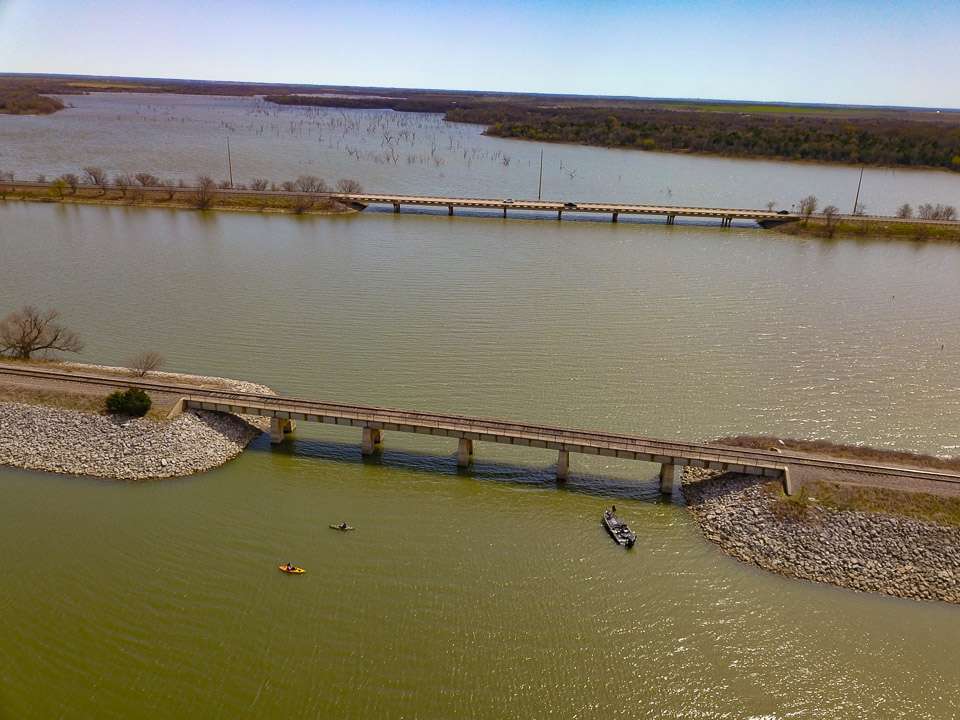
FORT WORTH, Texas — The 2021 Academy Sports + Outdoors Bassmaster Classic presented by Huk is coming to Lake Ray Roberts, June 11-13. Everything is bigger in Texas, including the bass. Will the fishery produce genetically superior trophy bass during the Classic? We turned to an expert to find out.
The potential for big Texas largemouth to be caught is possible, thanks to the fisheries management policies of the Texas Parks and Wildlife Department.
“I would expect to see fish caught over the 8- or 9-pound range, with the possibility of a 10-pound plus largemouth,” said Dan Bennett, district supervisor who oversees fisheries management of the Classic fishery.
The Texas Parks and Wildlife’s highly acclaimed Toyota ShareLunker program, and its trophy bass progeny stocking program is one of the reasons why. Anglers catching bass weighing over 8 pounds submit entries into the program for research and recognition. Largemouth weighing 13 pounds or more can be loaned for breeding purposes, with the genetically superior offspring released, along with the entry, back into Texas waters.
Ray Roberts received such stockings in 2005 and 2021. The lake has produced 19 ShareLunker entries, including the 15.18-pound lake record caught in 2015. Of all entries, six weighed more than 13 pounds.
Ray Roberts is also on a regular stocking program to keep the fishery up to par with other trophy lakes in Texas. Texas Parks and Wildlife stocked the lake with a total of 417,910 Florida largemouth fingerlings in 2019 and 2017. A total of 1 million were stocked in 2011 and 2013.
Impounded in 1987, Ray Roberts fisheries biologists envisioned following the same management queue as Lake Fork, the state’s top producer of ShareLunker entries. At both projects, Florida largemouth breeding pairs were stocked in existing farm ponds before the lakes were inundated. The theory was the trophy potential would be jumpstarted as the lake filled. At Lake Fork, the plan was an overwhelming success.
Lake Fork’s nutrient rich watershed was the reason why. Runoff from agricultural lands and dairy farms into the feeder creeks spread nutrients throughout the lake. That enabled the lake to feed itself from the bottom of the food chain and up. That never took off at Ray Roberts, where the watershed and landscape is dotted by small farms and ranches.
What did occur in favor of fish habitat were agreements made between Texas Parks and Wildlife and the U.S. Army Corps of Engineers.
“We consulted with the Corps during the construction phase about selective harvest of the timber and to keep fish habitat in mind,” said Bennett.
The Corps answered by creating massive mounds of what it called brushpiles, although by sheer size they are much bigger.
“When the dam was built, they cleared a lot of the timber and around the lower lake,” said Gene Gilliland, B.A.S.S. conservation director who fished on the lake prior to its impoundment. “There are 50 of those that rise 20 feet off the bottom.”
Ray Roberts, at 25,600 acres, has two arms that run north and south on the compass dial. Those are the Elm Fork of the Trinity River, to the west, and the east arm. The Corps left much of the timber uncut in the east arm. On the downside, the area is void of any identifiable or marked channels or boat lanes. Without aids to navigation boating can be dangerous in the east arm above Indian Creek.
“Much of the timber used for the brushpiles was bottomland hardwood trees that we can still see today using side scan sonar,” said Bennett. “They are still ideal fish habitat.”
What remains is 2,000 acres of standing timber, according to Texas Parks and Wildlife. There was much more, until the Corps discovered significant erosion along the 2-mile riprap shoreline of the dam. The water level was lowered 12 feet to bolster the riprap, and in doing so, much of the newly exposed and waterlogged standing timber collapsed at the water level.
The predominant visual habitat at Ray Roberts is the standing timber. Aquatic vegetation is sparse. The Elm Fork arm is more turbid than the west arm, due to runoff from farmland. Hydrilla grows in one cove on the east arm, and common and American pondweed covers about 10% of the surface area.
All of the historical prevailing patterns during the June 11-13 Classic point to an offshore bite as the predominant strategy that will be in play, although the lake could be in a postspawn transition.
“Our creel data and surveys are strongest in the deeper water areas,” said Bennett. “Most of the bass effort takes place on the east arm, and that could be due to it having more habitat, or more access areas.”
Will the lake show out with a double-digit trophy? There is a legit chance that will happen. After all, this is Texas, also known as land of the giants.





